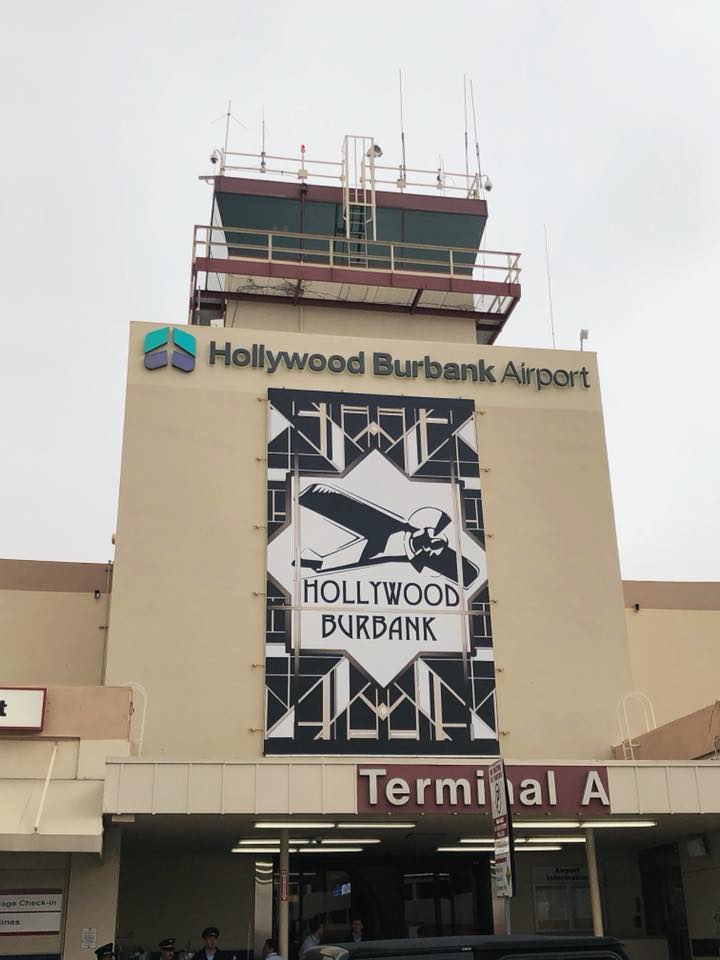
(This is a slightly different version of a story we wrote for NBC News)
When low-cost carrier Avelo Airlines launched the first of 11 new routes to small cities and secondary airports from 14-gate Hollywood Burbank Airport (BUR) in April, it raised the airport’s profile as an alternative to Los Angeles International. And put a spotlight on BUR’s outdated facilities
“The existing terminal is too close to the runways and taxiways,” explains BUR executive director Frank Miller, “And the building is now 91 years old.” A terminal replacement plan put on hold due to COVID-19 is back on track. But funding sources for this – and for other airport infrastructure projects around the country – are “simply inadequate,” says Miller.
Even before the pandemic and the sharp decline in air travel, “chronic underfunding” created a backlog of more than $115 billion in necessary infrastructure needs for just the next five years, according to a study by Airports Council International – North America (ACI-NA) released in March.
“We’re trying to build 21st century airports,” says Kevin Burke, ACI-NA’s president and chief executive office, “But we have 20th century airports that are, on average, more than 40 years old.”
Will infrastructure funds help?
That is why airports continue pushing for an increase to one of the main ongoing infrastructure funding mechanisms for airports – the federally capped user fee on tickets known as the Passenger Facility Charge. That fee was last raised from $3 to $4.50 twenty years ago, before 9/11.
And it is why all eyes are on the $25 billion line item for airports in the Biden Administration’s infrastructure plan being hammered out in Washington, D.C.
The proposal includes $10 billion to supplement the Airport Improvement Program (AIP), $10 billion for terminal redevelopment and intermodal transit connections, and $5 billion to replace and modernize Federal Aviation Administration equipment.
ACI-NA’s study says that instead of investing in large, high-impact projects to modernize facilities and increase capacity, “airports have been forced to prioritize smaller, immediate needs like maintenance of aging structures and systems.” And now there are “tens of billions of dollars in additional projects that have been delayed or canceled due to the pandemic and economic recession.”
Projects on, Projects off
For example, during 2020, Raleigh-Durham International Airport (RDU) deferred $96 million in construction projects. And in April 2020, San Francisco International Airport (SFO) announced the postponement of a $1B renovation project for Terminal 3 West, where United Airlines operates. That project is still on hold, says airport spokesman Doug Yakel, “Although we will be revisiting the timeline for this project later this year.”
During the pandemic, Dallas Fort Worth International Airport (DFW) put the $3 billion, 24-gate Terminal F project on pause. But it pressed ahead with some other major projects, including the accelerated reconstruction of an arrival runway, the opening of the four-gate Terminal D South extension of the international terminal, and the construction of a new operations center.
“We continued the work because it was important to the airport,” explains DFW CEO Sean Donohue. “But the projects were also important to the region. During the peak of all that work it created 4,000 construction jobs.”
Los Angeles International Airport (LAX), Portland International Airport (PDX), Seattle-Tacoma International Airport (SEA), and Kansas City International Airport (KCI) are some other airports that moved forward with major construction work during the pandemic. In some cases, completing projects ahead of schedule and with some cost savings thanks to reduced traffic in and around the terminals.
And Pittsburgh International Airport (PIT), which put a hold on it $1.1 billion terminal project in April 2020 due to the COVID-19 pandemic, was able to restart that project in February 2021.
“The pandemic really highlighted the need for our Terminal Modernization Project,” said Christina Cassotis, CEO of Pittsburgh International Airport. “We’ll be the first airport in the country built from the ground up in a post-pandemic world and that’s given us the chance to include public health as a key component of the design.”
Next steps?
Despite the summer bump in travel, passenger traffic and the revenue it brings to airports is not expected to return to pre-pandemic levels until 2023.
ACI-NA estimates airports will lose at least $40 billion through March 2022 and even more if passenger traffic stays depressed. That makes finding funding for all the needed airport infrastructure projects more important.
The funds needed for short and long-term capital improvement projects at US airports far exceed the amounts in any of the proposed federal packages. “But the reality is that as things get back to normal and some level of funding is agreed to, you’ll see a lot more cranes, and a lot more work that will everyone,” says ACI-NA’s Burke.
“That includes communities, airports, the trades and, of course, passengers.”
Thanks for visiting Stuck at the Airport. Subscribe to get daily travel tidbits. And follow me on Twitter at @hbaskas and Instagram.